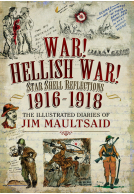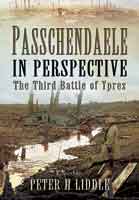Siege Warfare during the Crusades (Hardback)
Imprint: Pen & Sword Military
Pages: 344
Illustrations: 50
ISBN: 9781526718655
Published: 6th November 2019
(click here for international delivery rates)
Order within the next 33 minutes to get your order processed the next working day!
Need a currency converter? Check XE.com for live rates
| Other formats available - Buy the Hardback and get the eBook for free! | Price |
|---|---|
| Siege Warfare during the Crusades ePub (97.9 MB) Add to Basket | £6.99 |
Sieges played a key role in the crusades, but they tend to be overshadowed by the famous battles fought between the Franks and the Muslims, and no detailed study of the subject has been published in recent times. So Michael Fulton’s graphic, wide-ranging and thought-provoking book is a landmark in the field.
He considers the history of siege warfare in the Holy Land from every angle – the tactics and technology, the fortifications, the composition of the opposing armies, and the ways in which sieges shaped Frankish and Muslim strategy at each stage of the conflict. The differences and similarities between the Eastern and Western traditions are explored, as is the impact of the shifting balance of power in the region.
The conclusions may surprise some readers. Neither the Muslims nor the Franks possessed a marked advantage in siege technology or tactics, their fortifications reflected different purposes and an evolving political environment and, although there were improvements in technologies and fortifications, the essence of siege warfare remained relatively consistent.
Michael Fulton’s book is a fascinating all-round reassessment of an aspect of the crusades that had a decisive impact on the outcome of the struggle. It will be essential reading for medieval and military historians.
This is an excellent approach to this subject, successfully placing the more famous sieges in the wider context of the period, giving us a much better idea of how the competing powers in the Middle East used and attacked fortifications.
History of War
Read the full review here
Reviewed by OLIVER CREIGHTON (University of Exeter)
The Society for Medieval Archaeology
Michael Fulton’s Siege Warfare during the Crusades will become an important source of reference for those studying or researching a conflict in which historiography has often over- looked the sieges of towns and castles at the expense of other aspects of war. A lavishly illustrated text full of original photographs of sites, many of which are inaccessible and hard to find images of, guides the reader through the strategies, tactics and weaponry of offence and defence in the Latin East, in doing so bringing out similarities and differences between Frankish and Muslim experiences. The extracts from primary sources included as boxed text might prove invaluable, while the select site-by-site bibliography is also handy, as is the list of sieges with key details of outcomes and techniques employed. Archaeological evidence doesn’t take a back seat: it naturally features heavily in the sections relating to fortification, but there are also glimpses of the sometimes ephemeral material evidence for the practice of siege warfare, including trebuchet munitions and mines.
Siege Warfare During the Crusades must be considered the complete authority on this subject for many years to come. It will take something special to displace it as my book of the year.
Fortress Study Group, April 2020 - reviewed by Gil Dowdall-Brown
A very interesting study that brings a fresh new insight when studying the Sieges during the Crusades.
Miniaturas JM
Read the full Spanish review here
The definitive guide to siege warfare during the Crusades. The set piece battles of the crusades may have been well-recounted by historians but not the significance of the many sieges. – Very Highly Recommended.
Firetrench
Read the full review here
Essential reading for anyone wanting to know about siege warfare during the time of the Crusades. You would expect the Europeans to have superior knowledge, but, surprisingly, the Muslims seem to have won the day despite having no such knowledge of how to conduct sieges, or of the equipment involved.
Books Monthly
The first thing I need to say is the first appendix about all the sieges during the crusades is unbelievable. There were hundreds of sieges, and there is a lot of detail in the book about what used such has siege towers, or battering rams, mining or artillery use. It truly is fascinating. Certainly going to help with my short story idea.
Medieval Sword School, Jason Hulott
The second thing to say this is a hugely researched and detailed book. It covers the sieges of the period and goes in to details of both the defences deployed, as well as the attacking strategies too. It then goes on to cover the weapons used to attack fortifications as well as then the defence modifications need to counteract them... I really enjoyed this book. I can see this book being of huge use to wargamers of this period and re-enactors too.
Read the full review here
Featured ON THE BOOK SHELF with Neil Smith
Wargames Illustrated, November 2019
This book is described on its fly leaf as ‘graphic, wide ranging and thought provoking’ and it certainly succeeds in every respect. It is a very detailed history but written in a style that does not overwhelm and is described in clear and well thought out sections that allow you to dip into the book and enjoy it properly. It is all that a first class reference book should be; clarity of narrative and direction well supported by exceptional photography, maps and sources. This is a book you will read once and continually return to not only as an invaluable reference but as a cracking good read. Cannot fault it.
Michael McCarthy
Michael McCarthy. Battlefield Guide
About Dr Michael S Fulton
Michael S. Fulton is a Canadian historian and archaeologist of the crusades. He completed his PhD at Cardiff University in 2016 and has published widely on medieval warfare, fortifications, and the crusades. His books include Artillery in the Era of the Crusades (2018), Siege Warfare during the Crusades (2019), Contest for Egypt (2022), and Crusader Castle: The Desert Fortress of Kerak (2024).
















